Qutan Si Monastery, also called Drotsang Dorje Chang is a Gelukpa monastery in Tsongkha region of Amdo Tibet, currently located in Drotsang area 22km south of Ledu county and 88km east of Xining in Qinghai Province. It was founded in 1392 by Samlo Lama Sanggye Tashi under his patron, the Ming Hongwu Emperor. It was built on the site of a Karma Kagyu monastery. It is famous for its symmetrical complex of temples in sino-Tibetan style.
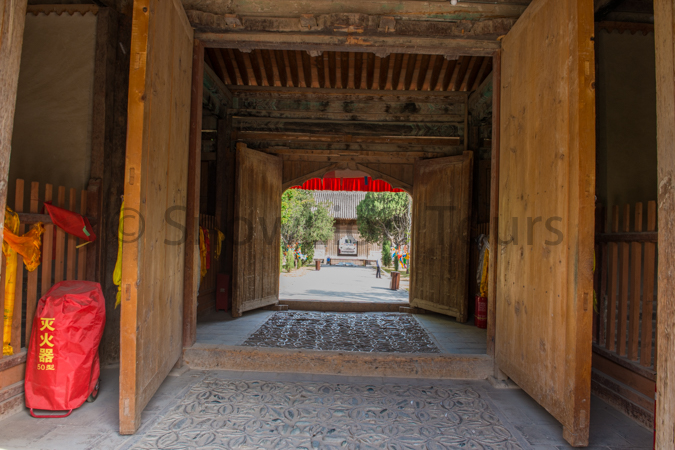
The entrance gate of Qutan Monastery
Lama Sanggye Tashi was later invited to the new Ming Dynasty court in 1389, where he was granted the title of Imperial Preceptor by the Emperor. According to legend he traveled to Nanjing on a flying white elephant, earning the name Langkarpa Sanggye Tashi, or The White Elephant -riding Sanggye Tashi.” Upon his return to Drotsang, in 1392, Sanggye Tashi established a monastery, Drotsang Lhakhang Gautamde, designated by the Hongwu Emperor as Qutan Si, or Gautama Monastery, so written on a red board in golden letters that continues to hang above the entrance of the front hall.
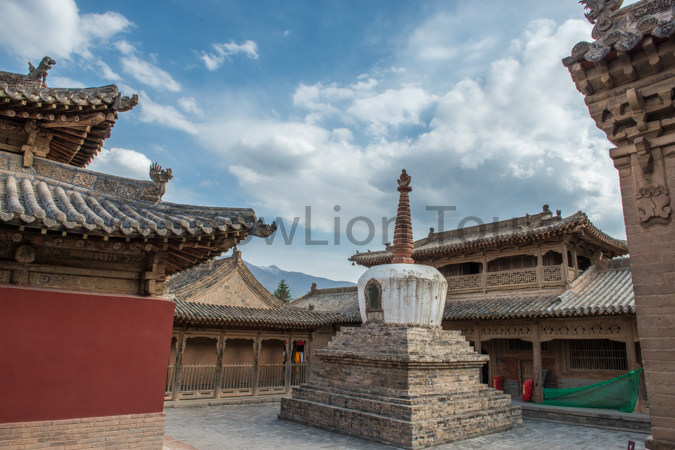
The stupa in Qutan Monastery in Qinghai.
Apart from the Ming and Qing religious murals in the ambulatory, Drotsang monastery is one of the finest remaining examples of ancient palace architecture. Its architecture is similar to that of the Forbidden City in Beijing, and it is sometimes called ‘the little Forbidden City’. In common with many other Buddhist temples, it includes the following structures: Diamond Hall, Gautama Hall, Precious Light Hall, Hall of the Flourishing Nation, Bell Tower, Drum Tower and Stele Pavilion. However, it is best known for its exquisite murals, which not only enrich the main halls, but which also decorate the inner ambulatory that surrounds the temple’s inner courtyard. The murals in the surrounding ambulatory, which tell the stories of Buddha’s previous incarnations.
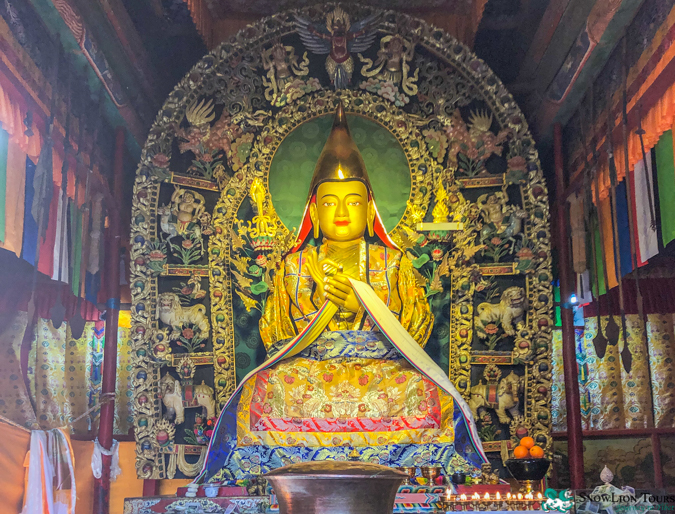
Statue of Je Tsongkapa in the temple in Qutan Si
There are ten plaques from Ming and Qing Dynasties in Drotsang Temple. A bronze bell was cast in Xuande in the Ming Dynasty, three incense burners, cymbals, ivory beads, sandalwood beads, Milarepa Stone statues, gold seals given by the Ming and Qing emperors, cloisonné vases, ivory towers and many other precious cultural relics are kept in Drotsang temple.
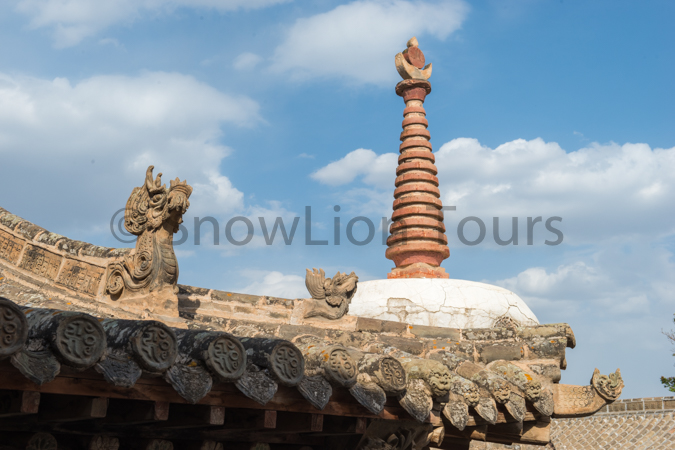
Roof top decoration of Qutan Temple in Qinghai.
The temple also contains more than 300 Buddhist scriptures and works such as “Kanjur”, “Tanjur”, “Je Tsongkhapa’s Anthology”, and nearly 100 relics from India were invited and enshrined in the stupa. The most striking of the extant relics in Drotsang Temple is the “Elephant Cloud Drum”.
There are several old stupas in the courtyard including Stupa of Bodhicitta, Stupa of Buddha descending from Devas(haven), Stupa of good deeds.etc. It is quite an experience to sit in the middle of ancient architectures and stupas which gives you an impression of time traveling. This is also one of the only few best preserved monasteries in Qinghai Province, therefore, it is one of the base of study and research ancient architecture and attracts students and researchers from China and abroad.
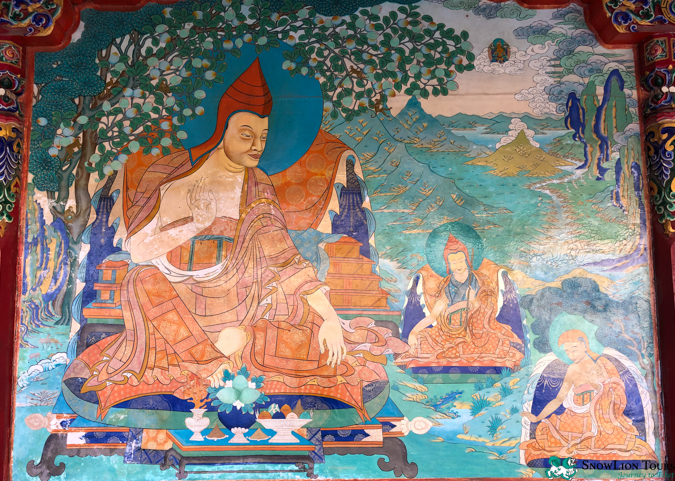
Wall Paintings in Qutan Si Monastery
If you are regular tourists, you can spend about 2 hours in the Qutan Monastery. But if you are interested in ancient arts and architecture, you may spend whole day.
Qutan Monastery entrance fee is 20Y per person with no time limitations inside the temple and monasteries.





